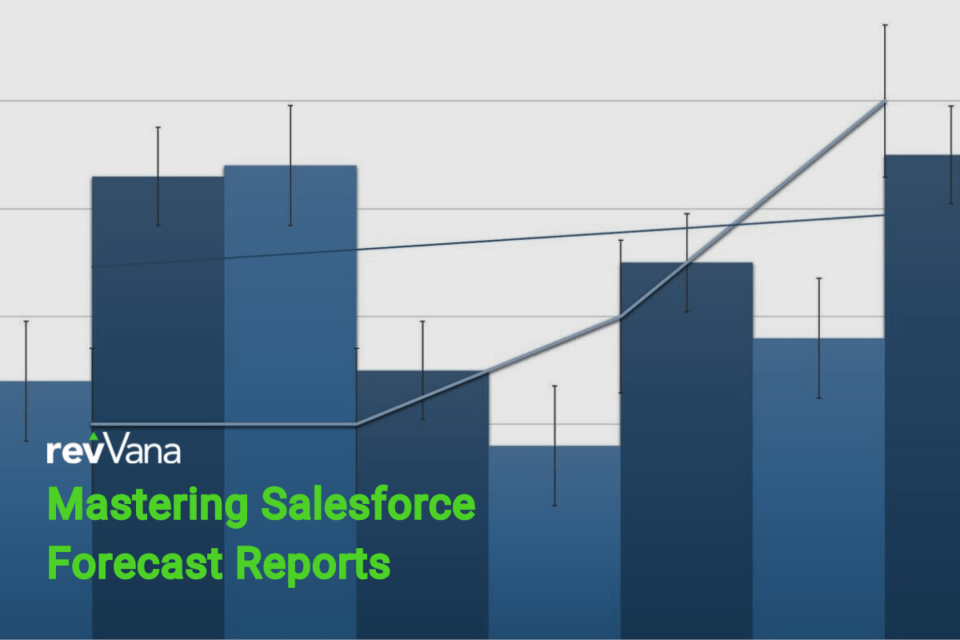

What Is Revenue Operations (RevOps) and Why Is It Important?
Learn about Revenue Operations (RevOps) as a strategy to align siloed revenue teams within B2B and B2C companies and unify revenue goals and targets.

Published on Friday, May 5, 2023
Accurate revenue forecasting is crucial for businesses to make informed decisions and allocate resources effectively. However, mastering Salesforce forecasting tools for revenue can be challenging, given the complexity of the built-in tools and the need to maintain data quality.
This article will discuss how to harness Salesforce’s capabilities for accurate revenue predictions and explore additional tools to enhance the forecasting process.
Salesforce provides a powerful forecasting tool to help sales teams predict revenue growth. This Salesforce forecasting module tool offers two main advantages:
Salesforce’s ability to schedule revenue is essential for accurate predictions. The Product Schedules tool is particularly useful in this regard, as it helps manage payment and delivery cycles, ensuring that forecasts align with actual revenue inflows.
While Salesforce offers robust forecasting capabilities, businesses can further improve their revenue predictions by augmenting their data and processes with additional tools. Two popular tools in this space are Clari and Gong. Both provide valuable insights into the likelihood of closing opportunities but have limitations when it comes to revenue forecasting in Salesforce.
Here’s a comparison of these tools:
Both Clari and Gong offer valuable insights, but they do not replace the need for accurate revenue forecasting within Salesforce itself. To make the most of Salesforce’s capabilities, businesses should seek solutions that integrate seamlessly with the platform and provide more accurate, real-time predictions.
If you want to improve your revenue forecasting within Salesforce, here are a few steps you can take.
The first step to improve Salesforce revenue forecasting is ensuring data quality within the platform. This involves maintaining clean and accurate data input by validating and updating records regularly. It is crucial to establish a process for data management to reduce inaccuracies and inconsistencies, which can negatively impact revenue forecasts.
Additionally, conducting periodic data audits helps identify and resolve any errors, further enhancing the quality of the data being used in the forecasting process.
Customizing forecasting settings is another essential step. To achieve this, businesses should adjust forecast categories to match their unique sales stages and processes. This customization ensures that forecasts accurately reflect the sales pipeline and opportunity progression.
Moreover, it is crucial to define fiscal periods in line with the company’s financial calendar. Aligning fiscal periods with your organization’s financial reporting requirements can help improve the accuracy and relevance of forecasts.
Creating custom reports and dashboards enables businesses to analyze revenue performance and trends effectively. These customizations can provide valuable insights that can be used to refine forecasting models and identify areas of improvement.
Additionally, analyzing historical sales data can help businesses identify patterns and make informed forecasts. This information can be instrumental in understanding the factors that influence sales performance and in making data-driven decisions to maximize revenue.
Lastly, involving sales and finance teams in the forecasting process is vital for achieving better decision-making and aligned goals. Collaboration between these teams ensures that revenue forecasts are based on a comprehensive understanding of the sales pipeline, financial objectives, and market trends.
By sharing insights from Salesforce’s forecasting tools, businesses can ensure that all stakeholders are informed and engaged. This collaboration leads to a more accurate and unified approach to forecasting, which ultimately drives smarter decision-making and growth.
Manual Salesforce plans can be time-consuming and error-prone, hindering effective revenue forecasting. To address this issue, businesses should seek tools that provide real-time insights on CRM data. Integrating such tools with Salesforce can streamline the forecasting process, allowing for more accurate predictions and better resource allocation.
Don’t let gaps in your revenue forecast cost your company millions. It’s time to take action and unlock the full potential of Salesforce revenue forecasting. By automating the process and ensuring Salesforce integration, you can gain accurate, up-to-date forecasts that drive better decision-making and growth.
revVana is the fastest way to create accurate revenue forecasts in Salesforce, reducing manual errors and providing the insights you need. Contact revVana today and start making data-driven decisions that will propel your business forward.